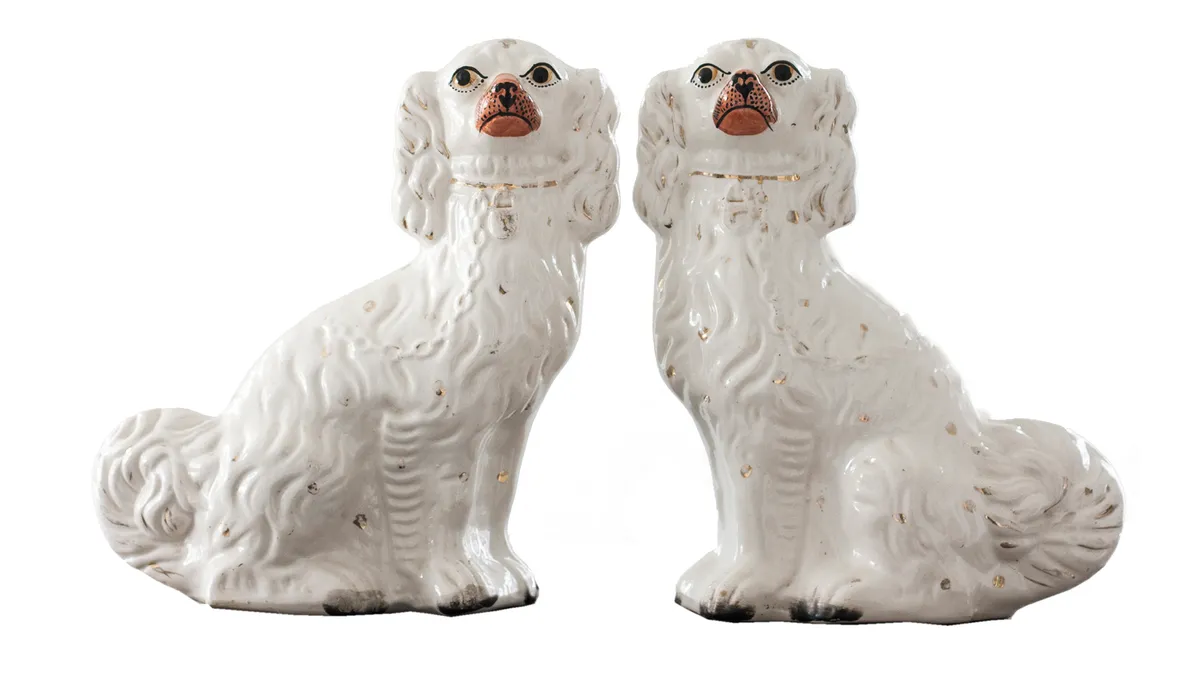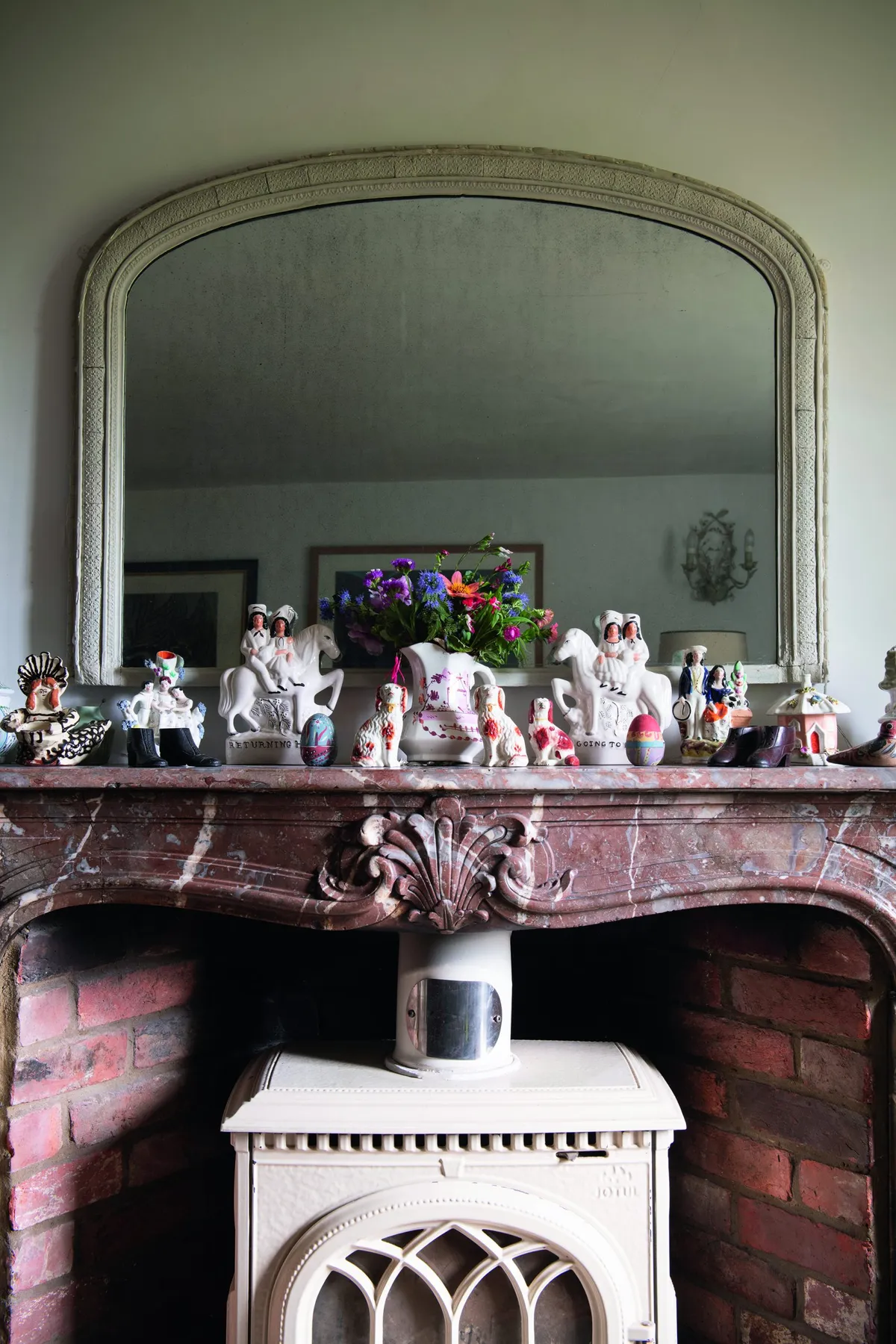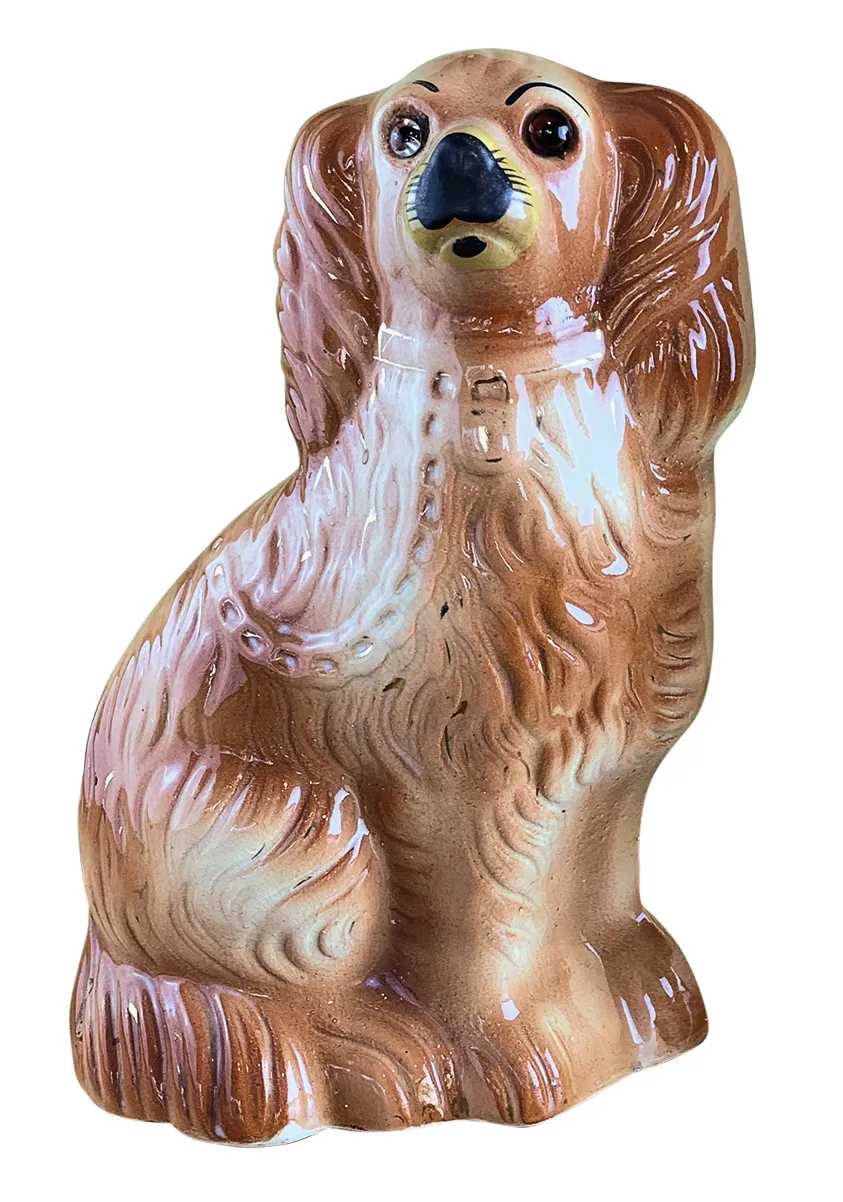Fashions ebb and flow but, as man’s best friends, dogs have always had a special place in our homes and hearts.
Perhaps that’s why soulful spaniels, elegant greyhounds and various other endearing canines made in the 19th century potteries of Staffordshire are still the treasured guardians of many people’s hearths and mantelpieces.
Check out our favourite dog-friendly stately homes to visit
Who made the first Staffordshire dog figurine?
‘Although no one knows who made the first Staffordshire dog, the starting point was certainly a dog celebrity: Dash, Queen Victoria’s closest childhood companion, a Cavalier King Charles spaniel, painted by Landseer and appearing in many prints,’ says specialist Paul Atterbury.

By the 1840s, dozens of small potteries in Staffordshire were making spaniels in a variety of sizes, ranging from around 5cm in height to over 30cm.
‘They were made and sold as facing pairs. The earliest were simply fashioned from earthenware, press- moulded in two pieces and painted by women or children in lots of different colours: black, russet brown or lustre. The collar and chain are moulded in the figure and usually gilded, and some dogs have glass eyes.’
You might also like the history of Martinware

Although they were a cheap product, made in their thousands to be sold at markets and fairs, they often have charming expressions full of character.
‘They were part of a Victorian cottage interior, definitely not for the smart home. So, from a historical perspective, they are an interesting indicator of increasing working-class wealth,’ explains Paul.
How do you identify the maker?
As the fashion took hold, other dogs – often with royal connections – also appeared. Prince Albert’s favourite greyhound, Eos, was modelled seated and recumbent.
You might also find poodles and Newfoundlands, and groups with children and dogs, but all of these were made in smaller numbers.
Dating dogs is not an exact science, because the same moulds were used throughout the 19th century, often handed from factory to factory. Some companies, such as James Kent, founded in the 1890s, were still producing figures until the 1950s.

‘Early dogs are never marked. Despite their simplicity, they are well made with sharp modelling. The body is hollow and they feel relatively light. Gilding will probably look a bit worn. Later 19th-century dogs are slip-moulded and, as moulds are reused, the detail becomes blurred, figures clunkier and the painting cruder,’ says Paul.
‘I wouldn’t call the 20th-century versions fakes because production processes are the same, they were made in England and not meant to deceive. These are quite different from modern fakes from the Far East: they are heavy, shiny, with a garish, regular, mechanical look and brassy gilding.’
You might also like what is a maker's mark?
How much can you expect to pay for antique Staffordshire dog figurines?
Prices for Staffordshire dogs have jumped up and down as much as any bouncy spaniel.
‘Collectors loved them in the 1950s and 20 years ago they were far more expensive than now. Then you might have paid £500+ for a good pair of mid 19th-century spaniels, which a few years ago were struggling to fetch £80, but these days might cost £100-£150. Rarities will be more but singletons less than half. Beware of dogs on eBay – most are modern fakes and very cheap.’

What to look for when buying a Staffordshire dog ceramic:
Your checklist for genuine antique Staffordshire dogs...
- Press-moulded body with defined modelling and a very small firing hole in the base. (Later versions are slip-cast and there will be a larger hole in the base).
- Painted decoration: detailed with a face full of character and slight differences between the pair.
- The back may be painted.
- Soft gilding showing evidence of age.
- Signs of crazing, or firing flaws on the base.
- No maker’s mark.
You might also like...
If you've enjoyed this article from Homes & Antiques, you might also like to further your knowledge with The Story of Staffordshire Dog Figurines

